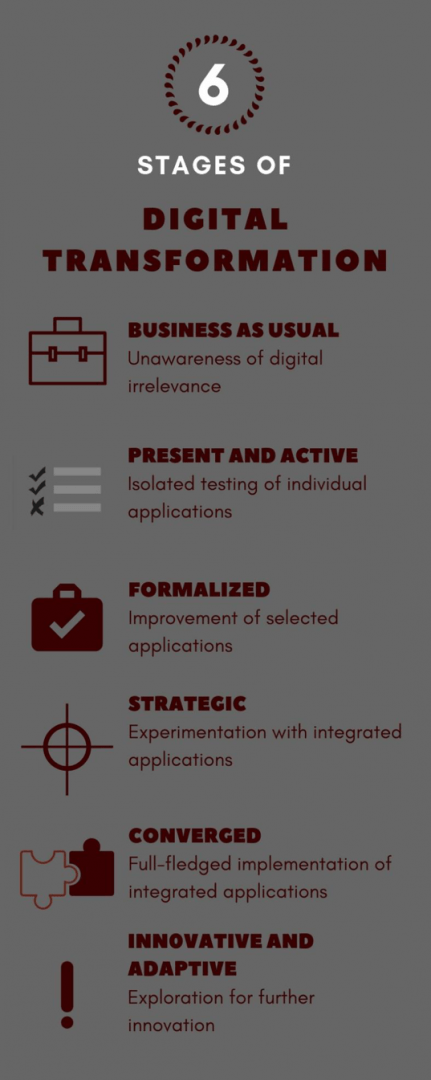
From automating and accelerating the process of designing new car models to enabling cars to drive themselves, digital transformation in the automotive industry is redefining the way vehicles are conceived, assembled and operated.
From animal-drawn carriages and carriages in ancient times to self-propelled vehicles today, the way we move through land has seen massive changes, to say the least. Cars, since their invention nearly two centuries ago, have turned from an innovative marvel to a luxury, now, a necessity for most of the people. The automotive industry pioneered by giants such as Ford and Benz has seen a steady growth over the decades to date, but the growth of the industry in the pre-digital era is nothing compared to the rapid transformation that is currently taking place. The past decade has seen the proliferation of every conceivable digital technology in the process of building or driving a motor vehicle. Be it Artificial Intelligence, Big Data, Internet of Things or Blockchain, all kinds of digital technology is transforming the automobile industry. Digital transformation in the automotive industry is set to change not only the way cars are driven, but the way they are built and conceived.
Digital Transformation in the Automotive Industry
Artificial intelligence is powering self-driving cars
If you have been following the world of technology and the automobile in recent years, chances are you are already aware of the imperatives of self-driving cars around the world. Self-driving car, as the name suggests, refers to AI powered cars that do not require a human driver for operation. These cars, although not as common today as AI enthusiasts like, are currently being tested on the roads with real passengers. We are getting closer to achieving fully self-propelled with new advances such as the development of vector-based navigation, which gives AI agents the ability to orient and move in physical space like humans and other animals.
A future where the roads are exclusively filled with self-driving cars seems far-fetched, both because of the technical hurdles that need to be overcome, and the fact that there will be people who would choose to drive their own vehicles. Until the era of total vehicle automation arrives, technologies like AR and IoT are being employed to enrich the experience of driving and owning cars. An increasing number of IoT sensors are being incorporated into automobile design to allow drivers to monitor critical parameters related to vehicle location and performance. Onboard vehicle telemetry, which has been in use for some time, not only helps government regulators track the vehicle, but also enables them to force the vehicle to stop. Systems that enable remote connectivity and data gathering are becoming increasingly common in modern cars. Vehicles have onboard sensors to track dozens of performance parameters that relate to the driver’s dashboard display, and in some cases even to the car manufacturer. The information collected may also include driver behavior data that can be used to find patterns in drivers’ driving habits, which can help to adjust vehicle parameters not only in real time but also in future vehicle features. Can also be used to improve
The advent of digital marketing and the Internet is helping customers evaluate vehicles
Digital technology has probably had the biggest impact on the way customers buy and manufacturers sell automobiles. Before the popularity of the Internet and recent advances in digital technology, customers did not have many ways to evaluate and compare their options before purchasing a new vehicle. Except for short commercials on television and print media and time-consuming trips to vehicle dealerships, people didn’t have many ways to make an informed decision when buying a new car. With the advent of the Internet and digital marketing, car buyers can now have comprehensive information, including opinions and reviews on vehicles, to help them make a buying decision.
Car manufacturers have more channels to market their vehicles to customers, and especially in a more focused manner with the help of big data analytics and targeted marketing. Digital transformation in the automotive industry has reduced the barriers between manufacturers and customers, which means manufacturers can have a better understanding of the market.
A new trend in automobile delivery is the increasing use of virtual reality. Manufacturers like Audi have started using virtual reality at their dealership facilities to give potential buyers a virtual tour of their offerings. Eventually, fully immersive VR test drives may be a common practice in the automotive market.
Industrial Internet of Things is improving the manufacturing process
The introduction of digital technologies such as analytics and Industrial Internet of Things (IIoT) has been a major game-changer in the automotive industry. Predictive analysis has become a staple in manufacturing facilities, where it is used to monitor and maintain the health of manufacturing and assembly equipment. Predictive analytics has enabled automakers to cut down on breakdown times by reducing unplanned stoppages. Continuous analysis of manufacturing processes using big data analysis is helping manufacturers to improve assembly processes and identify areas of bottlenecks that were previously unnoticeable.
The advent of the Internet of Things has multiplied the influx of operational data that is collected from vehicle assembly lines, allowing processes to be further improved. Analytics is leading not only to improve the mechanical aspects of manufacturing but also towards better management of both material and human resources. The use of artificial intelligence and machine learning in the automotive industry has further improved the way cars are assembled, leading to shorter lead times, greater quality and, consequently, increased profits.
Artificial intelligence analytics is creating new vehicle designs
In addition to redefining the way cars are built, digital transformation in the automotive industry has also changed the way vehicles are conceptualized. Artificial intelligence, which has already made significant inroads into processes requiring repetitive precision, has also begun to prove itself in tasks requiring creativity. Automobile manufacturers have started exploring the use of artificial intelligence to design cars. Car design, which used to be a completely human process, is now gradually being delegated to intelligent systems that use a large base of knowledge and data as a reference to generate entirely new car models. which not only meet the aesthetic requirements but also the performance requirements of the mainstream public.
The use of IoT and Big Data is helping automakers continuously monitor their cars and use them by customers to determine which aspects of the design are working and need to be changed. Used to be. With increasingly flexible manufacturing systems, the time between conceptualizing a design change and its execution is becoming incredibly short. Thus, automakers are benefiting from digital transformation through increased design flexibility.
Although digital technology remains a major transformative factor in the automotive sector, the role of other developments in transforming the industry, such as the search for new sources of energy, is undeniable. However, unlike innovations in renewable energy and material science that lead to occasional but radical changes in the transportation sector, digital transformation in the automotive industry is an ongoing process that drives, delivers and operates cars. Will constantly change the way we design. .


0 Comments: